calsfoundation@cals.org
Chewaukla Mineral Springs Co.
The cold-water springs below the site of the bottling factory of Chewaukla Mineral Springs Co. (later the Sleepy Hollow Water Co.) outside Hot Springs (Garland County) became a national sensation, with backers from Chicago and an “expert” touting their “radioactive medicinal value.” Guy Lombardo and His Royal Canadians wrote a song dedicated to this “Sleepy Water of Hot Springs, Arkansas.” Radio programs and newspapers such as the Chicago Tribune disseminated testimonials of what the water could cure. The bottling factory was located on what is now Sleepy Valley Road off of Highway 7 South just north of Hot Springs proper and within Hot Springs National Park. In the twenty-first century, the remains of the facility are not marked by any path or sign.
In a 1986 publication, Bill Dever recorded a legend about the springs from a brochure for the company, writing, “One such spring, as legend has it, was named after an Indian princess, whose father, the chief, came to the area to utilize the waters and for recuperation.” The name “Chewaukla” was, in this legend, said to mean “sleepy water” and was given to the springs “since the drinking water gives the restful and relaxed feeling that a deep sleep gives a person.” Although the company used the legend and the logo for their marketing pamphlets, the Quapaw, Choctaw, and Osage recognize neither the legend nor the word Chewaukla and assert that Native Americans never did more than trade in the area that became Hot Springs.
There is little information on the early history of the company. One of the earliest records uncovered for the company—1913 Mineral Resources of the United States—reports its sales. The geological survey reported that total sales had “increased from 1,032,032 gallons, valued at $132,257 in 1912 to 1,428,869 gallons, valued at $151,412 in 1913, an increase of 2 per cent [sic] in quantity and 15 per cent in value. The average price per gallon rose from 10 to 11 cents.” The Garland County Clerk’s office dates the incorporation of Chewaukla Mineral Springs Co. to February 8, 1938, with it being renamed the Sleepy Hollow Water Co. on July 8, 1959.
Unlike many of the springs of Hot Springs, Chewaukla Springs emit cold water. The company was a source of mineral water for people as far away as Chicago, Illinois. For example, the April 14, 1931, issue of the Chicago Tribune included an advertisement in which the “Sleepy Water” was described as “to be had from only one source—a pair of twin springs in the Arkansas hills. Peculiar natural forces here inject certain mineral combinations which are not to be found in any other water. These natural alkalines neutralize and absorb the acid poisons and body wastes which so often cause and aggravate diabetes.” In addition, the water was said to help those who suffered from “rheumatism, high blood pressure, arthritis,” and numerous other ailments, given its power “to drive out poisons and purify blood.” Another advertisement in the September 3, 1927, Reform Advocate, a Jewish publication from Chicago, featured a claim, signed by Dr. Robert Unzicker of the Physicians’ Diagnostic Laboratory, that the water from Chewaukla Springs was highly radioactive, showing “five times more Radium reaction than the other waters analyzed by me.”
In the early twentieth century, radium was in or touted to be in toothpaste, cosmetics, butter, and a good deal of other household products. Before radioactivity was understood as potentially dangerous, radium was thought to be life-giving and therapeutic. Surgeon General Dr. George H. Torney, believing in radioactivity’s curative properties, wrote around 1910, “Relief may be reasonably expected at the Hot Springs in…various forms of gout and rheumatism, neuralgia; metallic or malarial poisoning, chronic Brights [sic] disease, gastric dyspepsia, chronic diarrhea, chronic skin lesions, etc.” However, the U.S. Nuclear Regulatory Commission Radium Historical Items Catalog 2008 includes a glass bottle that once held the “Sleepy Water” cure and lists the bottle manufactured by Chewaukla Mineral Springs Co. under the product category of “Quack” cures, stating, “There were probably no actual radioactive materials, advertised more based on the mineral contents than the radioactive assets, but the fact it comes from radioactive springs is still noted in the brochures.” This glass bottle reportedly dated to the 1910s.
In addition to advertising in newspapers, Chewaukla Mineral Springs Co. spread the word about its product using its Chicago-based radio program and a song written and played by Guy Lombardo and His Royal Canadians. The dance band dedicated the song “Sweet Chewaukla, The Land of Sleepy Water,” first published by Irving Berlin, Inc., of New York in 1929, “to the famous Sleepy Water, Hot Springs, Ark.”
The facility remained open for decades, but in the twenty-first century, only ruins remain. The cold-water springs still run under the former site of the bottling factory.
For additional information:
Dever, Bill. “Chewaukla Springs: The Land of Sleepy Waters.” The Record (1986): 164–191.
Y. Hope Osborn
Little Rock, Arkansas
 Business, Commerce, and Industry
Business, Commerce, and Industry Early Twentieth Century, 1901 through 1940
Early Twentieth Century, 1901 through 1940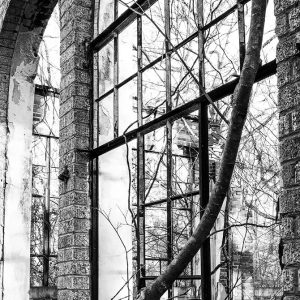 Chewaukla Bottling Factory Building
Chewaukla Bottling Factory Building 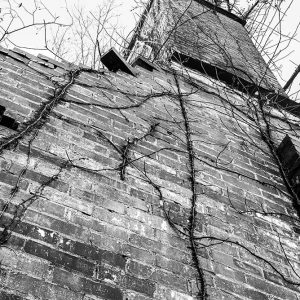 Chewaukla Bottling Factory Chimney
Chewaukla Bottling Factory Chimney  Chewaukla Bottling Factory Gazebo
Chewaukla Bottling Factory Gazebo  Chewaukla Bottling Factory Gazebo
Chewaukla Bottling Factory Gazebo 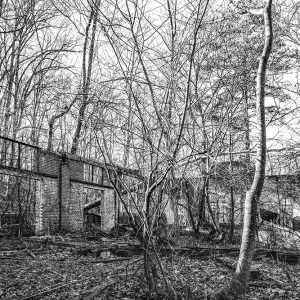 Chewaukla Bottling Factory Interior
Chewaukla Bottling Factory Interior 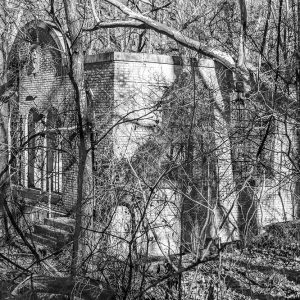 Chewaukla Bottling Factory Main Building
Chewaukla Bottling Factory Main Building  Chewaukla Bottling Factory View
Chewaukla Bottling Factory View 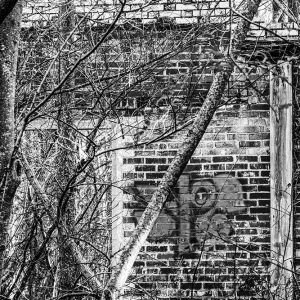 Chewaukla Bottling Factory Wall
Chewaukla Bottling Factory Wall 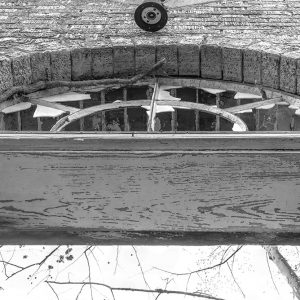 Chewaukla Bottling Factory Window
Chewaukla Bottling Factory Window 



Comments
No comments on this entry yet.